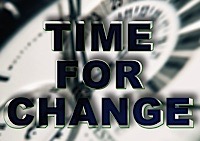 How do you know if your startup idea is the next next big thing?
How do you know if your startup idea is the next next big thing?
It’s easy. It isn’t.
Most Great Companies Started With Bad Ideas
Most great companies started off with very different ideas that were either not very good or impractical. Very rarely does a startup actually start with the idea that makes them the next big thing.
Here are just a few examples of successful companies that had very different and troubled initial ideas:
Initial idea: Allow groups of people to band together to accomplish a goal called ThePoint
Eventually: Groupon
innovation DAILY
Here we highlight selected innovation related articles from around the world on a daily basis. These articles related to innovation and funding for innovative companies, and best practices for innovation based economic development.
Why can most people remember a color, but only a few can remember pitch?: Scientific American
 See Inside Why can most people remember a color, but only a few can remember pitch?
See Inside Why can most people remember a color, but only a few can remember pitch?
—David Hardie, Perth, Australia
Robert O. Duncan, a behavioral scientist at York College, the City University of New York, responds: Although most of us believe we are better at identifying colors than sounds, our ability to identify the exact frequency of light associated with a color is actually no better than our ability to name a pitch.
Our perception of visible light depends on context. You might go shopping for house paints, for example, and be shocked to find that the particular shade of white you selected in the store makes your kitchen look pink! You may have chosen the wrong shade of white because the ambient light in the store differs from that of your home. If we could accurately identify colors, we would never make such mistakes. People may think they are more adept at identifying colors, however, because they tend to associate hues with specific objects, which do not change. For instance, we will generally perceive an apple to be red because the light reflecting off its surface remains fairly constant from moment to moment.
Dr. No Money: The Broken Science Funding System: Scientific American
 Ever since Johannes Kepler traipsed over half of Europe wooing aristocratic patrons, scientists have grumbled about money. But their complaints these days go beyond the familiar griping about being underpaid and underappreciated. They amount to a powerful case that the system for funding science is broken—that it hinders scientific progress and fails to deliver the most bang for the buck. Fixing the system can no longer be put off.
Ever since Johannes Kepler traipsed over half of Europe wooing aristocratic patrons, scientists have grumbled about money. But their complaints these days go beyond the familiar griping about being underpaid and underappreciated. They amount to a powerful case that the system for funding science is broken—that it hinders scientific progress and fails to deliver the most bang for the buck. Fixing the system can no longer be put off.
Most scientists finance their laboratories (and often even their own salaries) by applying to government agencies and private foundations for grants. The process has become a major time sink. In 2007 a U.S. government study found that university faculty members spend about 40 percent of their research time navigating the bureaucratic labyrinth, and the situation is no better in Europe. An experimental physicist at Columbia University says he once calculated that some grants he was seeking had a net negative value: they would not even pay for the time that applicants and peer reviewers spent on them.
With 8.4 Million American Millionaires, Billionaire Is The New Goal | Fast Company
 Most of us are still working our jobs, waiting for our paychecks and hoping or wishing to someday be millionaires. The problem with that is that having the title of "millionaire" just doesn't hold the same oomph that it once did. Being a millionaire no longer means you won't have to work, nor does it mean that you can get anything you want. Are we now having to shoot for billionaire status if we really want to have "made it" in this world?
Most of us are still working our jobs, waiting for our paychecks and hoping or wishing to someday be millionaires. The problem with that is that having the title of "millionaire" just doesn't hold the same oomph that it once did. Being a millionaire no longer means you won't have to work, nor does it mean that you can get anything you want. Are we now having to shoot for billionaire status if we really want to have "made it" in this world?
Money can't buy you happiness, but in many cases it certainly doesn't hurt. Particularly in capitalist economies, the accumulation of wealth is a primary life goal for many adults. We want to be happy. We want to be worry-free. We want to live the "easy life."
With 8.4 million American millionaires, is it really a worthy goal?
Apparently not. This infographic contends that "Billionaire is the new Millionaire," and with inflation heading in the vertical direction, the contention may be truthful. Who wants to be a millionaire? More importantly, does it really mean that much anymore?
You decide.
The 10 Most Innovative Companies In Russia | Fast Company
 01 / Yandex >>
01 / Yandex >>
For mastering search. The internet search company Yandex is already three times more popular than Google in its home market (Russia) and this year, it made its move onto Google's international turf with the launch of an English-language search engine. One of Yandex's key advantages has always been the complexity of the Russian language, whose Lego-set of prefixes, roots and suffixes has forced it to be a step ahead in the nuance of its algorithms. That pushed the Firefox browser to drop Google in 2009 as its default search engine in Russia, succeeding it with Yandex.
02 / Kaspersky Lab >>
For turning hackers into an army of virus fighters. Russia's leading computer security company has lured the most brilliant Russian geeks away from hacking (their usual forte) and into its virus analysis team. With the help of these whiz kids, Kaspersky Lab has become the fourth largest antivirus-program provider in the world.
How Can I Make My Employees Take Vacation? | BNET
 I’m a big, big fan of vacation. Employees perform at a higher level when they are rested. Just like you need sleep to function properly, you need some down time as well. I’m such a believer that I would rather have a lower salary and more weeks of vacation than a higher salary with less time off.
I’m a big, big fan of vacation. Employees perform at a higher level when they are rested. Just like you need sleep to function properly, you need some down time as well. I’m such a believer that I would rather have a lower salary and more weeks of vacation than a higher salary with less time off.
You’ve correctly identified the 3 problems your employees face:
1. Actual dollar costs
2. Social costs
3. Workload costs
Actual Dollar Costs: People respond to costs and the problem is that it’s extremely expensive for them to take vacation. First, there’s the actual dollar cost. If you make $52,000 a year, than one week’s pay is $1,000. Assuming everyone has 3 weeks vacation a year, that’s $3,000 a year. if you stay at your job for 10 years (certainly not unheard of in a university setting), that’s $30,000 you’re throwing away to take time off work. (And that’s assuming you get no raises over that 10 year period, which is unrealistic.)
The 100 Rules For Being An Entrepreneur
I f you Google “how to be an Entrepreneur” you get a lot of mindless clichés like “follow your passion” or “think big.” That’s not what you are going to get here.
f you Google “how to be an Entrepreneur” you get a lot of mindless clichés like “follow your passion” or “think big.” That’s not what you are going to get here.
Again, for me, being an “entrepreneur” doesn’t mean starting the next “Faceook.” Or even starting any business at all. It means finding the challenges you have in your life, and determining creative ways to overcome those challenges. However, in this post I focus mostly on the issues that come up when you first start your company. These rules also apply if you are taking an entrepreneurial stance within a much larger company (which all employees should do).
Will the Early Stage Innovation Program Make a Difference?
 The Small Business Administration (SBA) recently announced the start of the Early Stage Innovation Fund, a program that will provide $200 million per year in equity funding “over the next five years,” to “early-stage companies (that) face difficult challenges accessing capital, particularly those without the necessary assets or cash flow for traditional bank funding.”
The Small Business Administration (SBA) recently announced the start of the Early Stage Innovation Fund, a program that will provide $200 million per year in equity funding “over the next five years,” to “early-stage companies (that) face difficult challenges accessing capital, particularly those without the necessary assets or cash flow for traditional bank funding.”
Ray Leach of Jump Start America argued that the new fund will dramatically increase the amount of capital available to the founders of high potential companies. I disagree. The program’s expected impact, when measured in terms of incremental increase in available capital, companies funded, or jobs created will be very small.
The Biggest Myth About Innovation : Innovation :: American Express OPEN Forum
 In this post, I want to attack a controversial topic—something that people are starting to believe as an empirical truth. Something that I don’t believe has to be true.
In this post, I want to attack a controversial topic—something that people are starting to believe as an empirical truth. Something that I don’t believe has to be true.
It seems like most people are starting to believe that it is inevitable that formal innovation efforts begin with high energy and wane over time. And that this is true even if you’ve built robust innovation processes and have strong support for innovation at all levels of an organization.
Demystifying the VC term sheet: Drag-along provisions | VentureBeat
F or the past couple of months, I’ve been exploring some of the more confusing terminology of VC term sheets. In my last post, I discussed “protective provisions,” which grant the investors the right to veto or block certain corporate actions. In today’s post I examine “drag-along” or “bring-along” provisions, which can be very tricky.
or the past couple of months, I’ve been exploring some of the more confusing terminology of VC term sheets. In my last post, I discussed “protective provisions,” which grant the investors the right to veto or block certain corporate actions. In today’s post I examine “drag-along” or “bring-along” provisions, which can be very tricky.
Drag-along provisions grant the investors the right to compel the founders and other stockholders to vote in favor of (or otherwise agree to) the sale, merger or other “deemed liquidation” of the company. Investors view such provisions as an important protection, particularly if they seek to exit their investment and sell the company for a price less than the amount of their liquidation preference.
How does the leadership of an entrepreneur differ from that of a typical leader of an established corporate? « The Common Purpose blog
 As a serial entrepreneur, Julia Middleton posed this question to me and requested that I write this blog post. At first, it sounded like an easy assignment…but once you drill down into it, it certainly gets the grey matter working!
As a serial entrepreneur, Julia Middleton posed this question to me and requested that I write this blog post. At first, it sounded like an easy assignment…but once you drill down into it, it certainly gets the grey matter working!
At the outset, I completely buy into the “serve to lead model” concept (incidentally the Sandhurst Military Academy motto) which for me encapsulates “leadership”; therefore it is the essence of ‘serving others’ that is at very core of my thinking. So who are the others that we should be serving?
1. Customers
2. Employees
3. Shareholders
4. The Community
Entrepreneurs Must Minimize Friction For Feedback
 Entrepreneurship is not a job for the Lone Ranger. Every startup requires building and maintaining effective relationships with people, including partners, team members, customers, and investors. That means giving and asking for feedback, and learning from it, especially negative feedback.
Entrepreneurship is not a job for the Lone Ranger. Every startup requires building and maintaining effective relationships with people, including partners, team members, customers, and investors. That means giving and asking for feedback, and learning from it, especially negative feedback.
“Friction” is feedback mixed with emotion, making it all the more difficult to sort out the value. There should be no immediate assumption that one side is right, and the other is wrong. It may be an indication that one party isn’t giving the feedback well, or the other isn’t taking it well, or both. Both of these modes are wrong, and non-productive.
Social Learning, Complexity and the Enterprise
 Why is social learning important for today’s enterprise?
Why is social learning important for today’s enterprise?
George Siemens, educational technologist and researcher at Athabasca University, has succinctly explained the importance of social learning in the context of today’s workplace:
There is a growing demand for the ability to connect to others. It is with each other that we can make sense, and this is social. Organizations, in order to function, need to encourage social exchanges and social learning due to faster rates of business and technological changes. Social experience is adaptive by nature and a social learning mindset enables better feedback on environmental changes back to the organization.
Why The Most Important Part Of An Acquisition Is What Happens After
 It's become increasingly clear that what matters most in web acquisitions is what happens after the acquisition, not before.
It's become increasingly clear that what matters most in web acquisitions is what happens after the acquisition, not before.
The small news that personal profile service About.me struck a partnership with Moo.com to let users print business cards for free is actually a big deal from the perspective of how big companies do M&A, because About.me got acquired by AOL recently. It's actually quite rare for "acq-hires" like About.me to come out with cool, innovative features like that.
Green Growth: Buzz Word or a New Sustainable Economy?
 Since the old economy broke down in 2008, presidents, prime ministers and mayors have been promising their electorate "green" or "sustainable growth" -- and that is good news. In order to confront "the epidemic" of global warming and shape a safe economic future, we need to combine green and growth.
Since the old economy broke down in 2008, presidents, prime ministers and mayors have been promising their electorate "green" or "sustainable growth" -- and that is good news. In order to confront "the epidemic" of global warming and shape a safe economic future, we need to combine green and growth.
The bad news is that nobody knows what "green growth" is. The term has risen to stardom despite a very fragile fact base and almost no academic understanding of how, e.g., reducing emissions of CO2 can actually create jobs and additional activity in the economy. And that is a very dangerous situation. Without firm definitions and a body of evidence to support policies and investments, there is a great deal of risk that green growth will not happen. It will be too easy to argue against.
Report finds interesting ways of fostering ambitious entrepreneurship - Breaking News, New Brunswick, Canada
 In my view successful and sustained economic growth is almost always based on a mix of ambitious, local entrepreneurs and investment by national or international firms.
In my view successful and sustained economic growth is almost always based on a mix of ambitious, local entrepreneurs and investment by national or international firms.
In any effort to build a successful industry cluster, there are distinct roles for both larger, established firms and entrepreneurial start-ups.
In any jurisdiction, only a very small percentage of small start-up firms will every break out and become global leaders in their industry. Determining how a cadre of these ambitious entrepreneurs can be fostered in a specific area is the holy grail of economic development.
An interesting report published this week by the World Economic Forum sheds some light on the factors that drive successful entrepreneurship. The report studied evidence from 110 surveys in 22 different countries.
The Entrepreneurship of Innovation
 So often people ask me, “How does research get out in the world?” When that question comes around, to me it means that someone is not asking how best to write her next academic paper. Rather, generally someone seems to be interested in how innovations can see the light of day in industry. On campus, we have a number of resources that students and faculty can take advantage of: the Dingman Center for Entrepreneurship which bridges the academic and business world at the Robert H. Smith School of Business; the Maryland Industrial Partnership which funds partnerships with industry; the Technology Advancement Program which offers resources for developing companies.
So often people ask me, “How does research get out in the world?” When that question comes around, to me it means that someone is not asking how best to write her next academic paper. Rather, generally someone seems to be interested in how innovations can see the light of day in industry. On campus, we have a number of resources that students and faculty can take advantage of: the Dingman Center for Entrepreneurship which bridges the academic and business world at the Robert H. Smith School of Business; the Maryland Industrial Partnership which funds partnerships with industry; the Technology Advancement Program which offers resources for developing companies.
Innovation incubator gets global overhaul | The Next Silicon Valley
 Even startup incubators have to reinvent themselves from time to time, as ably demonstrated by the new abi Innovation Incubator in Manchester, NH. It seeks to attract new talent. For inspiration, and wall decoration in its old mill space, the incubator's operators tapped a deep local well of wise words from some sage local innovators.
Even startup incubators have to reinvent themselves from time to time, as ably demonstrated by the new abi Innovation Incubator in Manchester, NH. It seeks to attract new talent. For inspiration, and wall decoration in its old mill space, the incubator's operators tapped a deep local well of wise words from some sage local innovators.
First established in 1997, the Manchester incubator was recently renovated and its business mission fine tuned to the innovation exigencies of today.
In a story published this week by the New Hampshire Business Review, incubabator vice president of strategic initiatives and entrepreneur-in-residence Jamie Coughlin said he hopes the reinvented incubator will become the "home for all things startup and innovation" in the state.
The Results Are in: Devex Top 40 Development Innovators
 It’s happened to all of us: Something we do one way is suddenly made more effective by an innovation. It could be a technology like webinars that changes the way we learn and train, or a new approach like open floor-plan offices that help ideas spread in a flatter corporate structure. In the field of global development there are many transformative innovations underway, from mhealth to microfinance.
It’s happened to all of us: Something we do one way is suddenly made more effective by an innovation. It could be a technology like webinars that changes the way we learn and train, or a new approach like open floor-plan offices that help ideas spread in a flatter corporate structure. In the field of global development there are many transformative innovations underway, from mhealth to microfinance.
These and other innovations may hold the keys to truly transformative change. That’s why as a community that cares about making the world a better place, it’s important we incentivize and celebrate innovation as a means to generate faster and more effective change for people around the world.
It’s in that light that we at Devex are delighted to present the Top 40 Development Innovators. At the core of this initiative is a survey of aid workers and international development professionals designed to recognize the most innovative of the world’s leading international development organizations. Today, the survey is complete and the results are in!
With Flights Winding Down, NASA Astronauts Seek New Opportunities - NYTimes.com
 What happens when you have the right stuff at the wrong time?
What happens when you have the right stuff at the wrong time?
Members of NASA’s astronaut corps have been asking just that, now that the space shuttle program is ending and their odds of flying anywhere good anytime soon are getting smaller. The Endeavour is scheduled to launch this week, and the Atlantis is supposed to fly the last shuttle mission in June — and all the seats are spoken for.
“Morale is pretty low,” said Leroy Chiao, a former astronaut who now works for a company that wants to offer space flights for tourists. “This is a time of great uncertainty.”

